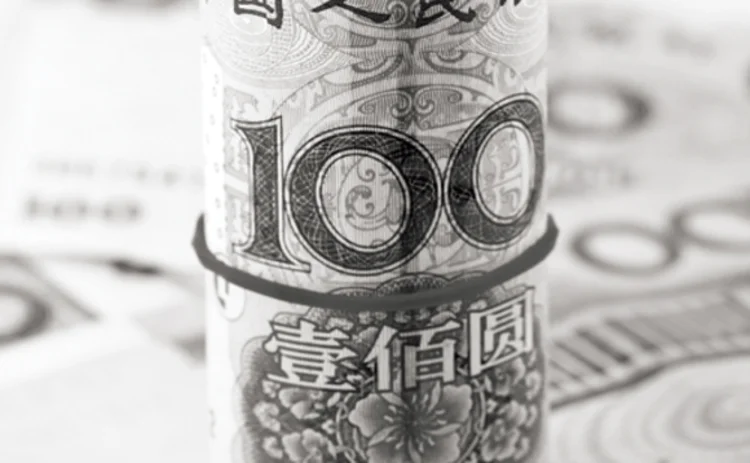
Australia to shift 5% of foreign reserves to China

The Reserve Bank of Australia (RBA) today revealed plans to invest around 5% of its foreign exchange reserves in China.
Philip Lowe, an RBA deputy governor, said the decision was "an important one" that reflects the "increasing financial ties" between Australia and China, and acknowledged the potential for these ties to grow "substantially further".
"It provides greater diversification of our investments and will help with our understanding of the Chinese financial markets," he said. "Over the long run and particularly as capital account liberalisation occurs in China, the renminbi is likely to become one of the major reserve currencies of the region."
At the end of March, the RBA valued its reserves at A$50.8 billion, A$39.9 billion of which is held as foreign exchange.
In the past year, China accounted for 26% of Australia's exports and 15% of its imports. Ray Attrill, global co-head of currency strategy at National Australia Bank, said it is "quite natural the RBA would want to own Chinese currency, to the extent they would want their reserve to bear some kind of resemblance to the underlying trade patterns of the country".
I don't expect it will be very long before we see other central banks making overtures to the Chinese authorities
He said that 5% is in fact "relatively small" given the prevalence of the currency in Australia's trading activities, and consequently "could be the thin end of the wedge, in terms of where they ultimately would hope to get to".
Earlier this month the RBA announced direct trading between the Australian dollar and the Chinese renminbi in the onshore market, making it one of three currencies – alongside the US dollar and the yen – for which direct trading is possible.
Attrill said the development had been "trumpeted as a major step forward in terms of trade and currency market liberalisation", and suggested that the option to purchase yuan-denominated assets was "almost like a reward for that".
The People's Bank of China (PBoC) and RBA agreed a swap line in March 2012 of up to A$30 billion or 200 billion renminbi. Lowe said it "provides market participants with greater confidence" in the availability of renminbi liquidity that "should help build a solid platform for the growth in the renminbi market in Australia".
An Asian currency strategist at the Commonwealth Bank of Australia, Andy Ji, said today's announcement is only formalising the RBA's investment strategy, and noted that 5% of their reserves equates to much less than the amount of renminbi available through the swap line. He said the RBA probably already holds CNY assets "one way or the other", and therefore the new investment was "in essence not such a significant move".
"Whoever has a swap line with PBoC is theoretically allowed to invest in the onshore bank markets," he said. "So far I think [the] Japanese and Malaysian central banks have formally announced it, but there will be a lot of other central banks."
Attrill said more reserve managers could come "knocking on the PBoC door" seeking the kind of access the RBA has been granted. "I don't expect it will be very long before we see other central banks making overtures to the Chinese authorities," he said. "I think it is a potentially significant move."
Moreover, he suggested the RBA's announcement could accelerate the renminbi path to achieving global reserve currency status. "Usually one necessary condition for a currency being suitable as a reserve currency is that it is freely floating and that it is not subject to manipulation by the central bank," he said. "Obviously we have not yet got full capital account liberalisation in China and the currency is still tightly controlled within the permitted trading bands. In that sense the currency still doesn't represent a currency that would meet the historical criteria for being a reserve asset. But to some extent the RBA announcement sort of leapfrogs that traditional constraint."
Only users who have a paid subscription or are part of a corporate subscription are able to print or copy content.
To access these options, along with all other subscription benefits, please contact info@centralbanking.com or view our subscription options here: subscriptions.centralbanking.com/subscribe
You are currently unable to print this content. Please contact info@centralbanking.com to find out more.
You are currently unable to copy this content. Please contact info@centralbanking.com to find out more.
Copyright Infopro Digital Limited. All rights reserved.
As outlined in our terms and conditions, https://www.infopro-digital.com/terms-and-conditions/subscriptions/ (point 2.4), printing is limited to a single copy.
If you would like to purchase additional rights please email info@centralbanking.com test test test
Copyright Infopro Digital Limited. All rights reserved.
You may share this content using our article tools. As outlined in our terms and conditions, https://www.infopro-digital.com/terms-and-conditions/subscriptions/ (clause 2.4), an Authorised User may only make one copy of the materials for their own personal use. You must also comply with the restrictions in clause 2.5.
If you would like to purchase additional rights please email info@centralbanking.com test test test







